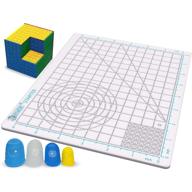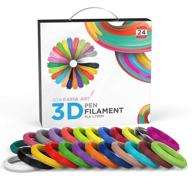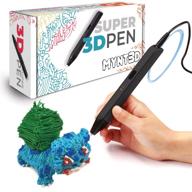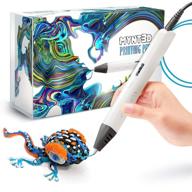
Review on High-Resolution Photopolymer Resin Printer by Monoprice by Josue Porter

Buy the deluxe model instead
This Monoprice SLA Resin UV 3D Mini 3D Printer is one of my first forays into resin 3D printing. Even though I've been 3D printing with filament printers for 3 years now, I still had a lot to learn with this printer because the process is completely different. First, this is the standard model. Monoprice also offers a very similar Deluxe model for about $100 more, and I highly recommend buying the Deluxe model if you can, due to the built-in touchscreen and the fact that it's a standalone printer acts. This model needs to be connected to a computer to run, and if you get a pop-up like a windows update or virus scan reminder, it will completely ruin your print. (If you already have this model, or someone gave it to you, I think the best solution would be to buy a Raspberry Pi and run some other free software called NanoDLP. I ended up doing this after watching a great YouTube video entitled How To Install NanoDLP for Teaching Tech's Wanhao Duplicator 7. I will absolutely not be using this printer anywhere else for now.) There are other, less obvious upgrades such as: B. Improved Z-axis stabilization that makes the Deluxe model a slightly better printer (although you can make these updates yourself) and is much more user-friendly. Also, you should know that this is a rebranded Wanhao D7. This is important because it's been around for a long time and there are user groups, online videos and documentation that you'll want to access as you learn to print and if you're having trouble (and you WILL have trouble because that's the nature of 3D -print and resin print). specifically.) When searching for videos on YouTube, look for the Wanhao D7 as there are almost no videos for this version from Monoprice. Also, make sure the videos you are watching are for that model - the model that does NOT have an LCD screen. Next, understand that no matter how careful you are, the resin print is dirty. Resin can and will drip and spill, and it seems to be flying all over the place. Isopropyl alcohol (IPA) is the only thing that cleans it, and you'll be using it in bulk. (If you're outside of the US, denatured alcohol works the same way.) Not only does it clean drips, you should use it to wash printouts and your desktop too. By the way, 91% IPA works better/faster than 70%. https://www.amazon.com/gp/product/B072PVPR1Z/ You want to keep the resin off your hands as it is toxic so you will be using lots of disposable gloves. I like these, but any disposable nitrile gloves will do. Make sure they are nitrile as the resin will destroy latex gloves. https://www.amazon.com/AMMEX-GWBN46100-BX-Nitrile-Gloveworks-Disposable/dp/B01G346JJ2/ The resin also has a strong chemical odor, so placing the printer in a WELL-ventilated area is a must. ADVICE. If there is an IKEA store near you, the $29.99 SUNNERSTA cart is made almost specifically for this printer. If you install the shelves upside down, they have all sides to prevent items from rolling off. The top shelf perfectly holds the printer and leaves space for consumables, while the bottom shelves are great for storing ISA, resin, gloves, paper towels, etc. The trolley has two wheels so you can move it when you're not printing. I will also be using LOTS of paper towels and have found putting a puppy training mat under the printer really helps. It absorbs drips and protects work surfaces and saves on paper towels. https://www.amazon.com/American-Kennel-Club-AKC-62920/dp/B00FNITSWU/ Finally, you need to buy liquid resin, which is more expensive than regular 3D printer filament. The printer comes with a 250ml bottle of resin. After that, you can go to the Monoprice website to buy 250ml bottles or buy other brands. I like the Monocure 3D Rapid resin but it's hard to find in smaller containers. https://www.amazon.com/Monocure-3D-Rapid-Resin-Printers/dp/B073DTG7NR/ Please note that different brands and different colors require different settings. You can find settings for many resins in the Wanhao D7 Facebook user group. This SLA (stereolithography) printer uses liquid resin as the print material and prints by exposing the resin to UV light layer by layer until the model is complete. The light source is located at the bottom of the printer. Since the sun also emits ultraviolet light, you should avoid exposing liquid resin to sunlight to prevent it from curing. There are currently two other types of resin printers on the market that use laser or DLP (digital light processing) instead of UV. They tend to be more difficult to repair and upgrade. This printer is relatively easy to use. The printer arrives very well packaged and unlikely to be damaged. It's heavy for its size but compact. Installation is easy - just screw the build plate in place and screw on the resin container (after removing the foam). You then need to install the Creative Workshop software on your computer and connect it to your computer with an HDMI cable. There are small models on the flash drive that can be printed immediately and I recommend doing this to ensure the printer is working properly. To do this, you need to level the build platform, which is easy and doesn't have to be done very often. Then wipe and dry the desktop and FEP film with isopropyl alcohol, put on gloves and pour some resin into the tub (no more than about 1/3) and put the cover on the printer. You want to leave the lid in place at all times except when adding resin, removing a print, etc. to prevent the resin from starting to cure with UV light in the bath. Select the desired model from the USB stick and start printing. Models are already optimally positioned and cut, which is necessary for high-quality printing. This will teach you how to correctly position your model for printing when you start printing other models. When you're done, while wearing gloves again, remove the print from the build plate using the included plastic scraper. This is a very messy process where excess resin left on the build platform is scraped off into the tank for reuse. Place the printed model in a wash bucket filled with isopropyl alcohol and swirl to remove excess resin. You should also clean the build plate with isopropyl alcohol as there is still a lot of resin on it. I use a Tupperware container filled with IPA for this. I highly recommend watching some YouTube videos that demonstrate this process. After your print has been washed you should fully cure it by placing it in direct sunlight or in a curing box. With a small plastic bucket and a strip of UV LED lights, you can easily and inexpensively make your own curing tank. There are instructions for this on the Internet. You can also use an inexpensive UV gel nail lamp that works great. https://www.amazon.com/LKE-Polish-Timers-Professional-Accessories/dp/B07G31SQZ7/ Using the Creative Workshop software to cut your own models or models you find on Thingiverse or My Mini Factory or elsewhere , has a certain bend training. There are tutorials online and on the Monoprice website, and it's worth checking out a few before you get started. It's good software, but it's not very intuitive and finicky. (Tip: Load and position the model, create supports, then save the model. After saving, cut it out, but DO NOT save the model again. Then just copy the model to a flash drive to print. ) Positioning and supports are crucial. for successful printing, like 3D filament printing. Other factors can also prevent a successful print, e.g. B. Cured resin residues that are still in the bath or on the build plate, or an exposure time that is too long or too short. Again, there's a learning curve, even if you've been 3D printing for years. There is currently an update available for Creative Workshop that seems easier to use and if you can get the update from the Wanhao website it comes pre-configured. However, I still strongly recommend getting a Raspberry Pi and using the NanoDLP software instead, and I'd happily do so immediately. I had a couple of bad impressions at the beginning and that was quite frustrating. When you're connected to a computer (as opposed to a Raspberry Pi), whatever happens on your screen will mess up your expression. A pop-up asking you to perform a security check, a splash screen, an email notification, or a new software version will mess up your print. After setting your computer to remove all notifications and screensavers, you will likely be left with other problems. A small amount of cured resin left in your tank, the wrong curing time, the wrong model placement, the wrong supports - there are a lot of things that can go wrong. For a while I really wondered if I could ever get a good print with this printer, but I carried on and read a lot and asked a lot of questions about user groups and finally I can get fantastic prints pretty consistently. However, I still strongly recommend buying the Deluxe model, which I also own. Definitely worth the extra money. I was really excited about SLA printing because of the insanely detailed prints. It will not replace my FDM printers as they have more print volume and the filament is cheaper and some filament prints much sharper. But for some types of models, such as jewelry and miniatures, the difference is like night and day. In fact, you can get prints so detailed that they can be used to make molds. It is very satisfying to be able to print objects with such incredible detail. The maker's dream. But I really don't recommend this model as the deluxe version is much more comfortable and not much more expensive.
- Handy item
- So far so good
New products
Comments (0)
Top products in 🖨️ 3D Printers
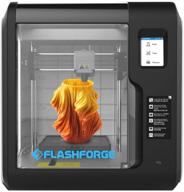
Flashforge Adventurer 3D Printer with Detachable Precision Leveling System

6 Review

🖨️ IFUN 3D Printing Liquid Resin: High-Quality Innovative Solution

5 Review

🖨️ FLASHFORGE Adventurer: Enhanced 3D Printer with Removable Extruders and Monitoring Features

4 Review

High-Precision And Stable Creality Ender 3 V2 3D Printer With New UI, Silent Mainboard, Effortless Filament Feed-In, XY-Axis Tensioner, Resume Printing, And Large Build Volume Of 220×220×250Mm

11 Review


